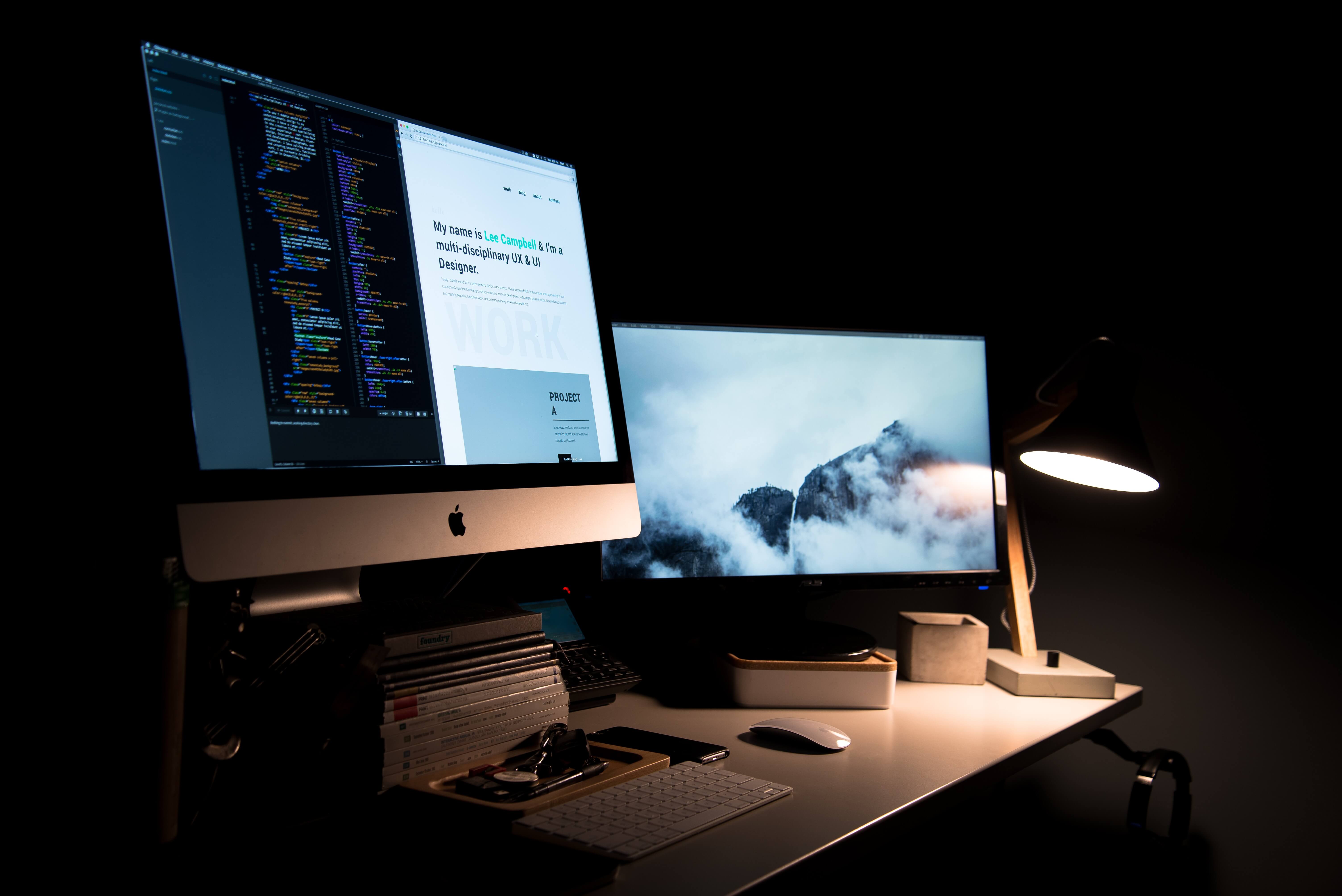All Categories
Featured
Table of Contents
- – Chavez Web Design: Web Design San Diego - Bake...
- – Why Web Design Is Dead - - Ux Magazine Tips a...
- – Learn Responsive Design - Web.dev Tips and Tr...
- – Arch Web Design: Top-rated Web Design Agency ...
- – Arch Web Design: Top-rated Web Design Agency ...
- – Top Web Design Agencies Ranked - 2022 Reviews...
- – Web Design Tutorials By Envato Tuts+ Tips an...
- – Redtree Web Design - Pittsburgh Tips and Tri...
- – Responsive Design Best Practices - Google Se...
- – $899 - Custom Mobile Friendly Website Desig...
- – Web Design And Development - Invision Tips ...
- – Web Developers And Digital Designers - Bure...
- – Sustainable Web Design: Home Tips and Tricks:
Chavez Web Design: Web Design San Diego - Bakersfield ... Tips and Tricks:
Desktop apps require designers to produce their style and send it to an advancement team who can then convert the design to code. Usually, this is the standard for big and/or complex sites since it enables the designer to focus on the overall look and feel, while all the technical difficulties are moved to the development team
Why Web Design Is Dead - - Ux Magazine Tips and Tricks:

Fantastic styles can interact a lot of info in just a couple of seconds. This is made possible with the use of powerful images and icons. A quick Google search for stock images and icons will produce thousands of alternatives.
Learn Responsive Design - Web.dev Tips and Tricks:
Your website visitors have numerous methods of connecting with your site depending upon their device (scrolling, clicking, typing, etc). The very best website designs streamline these interactions to offer the user the sense that they are in control. Here are a few examples: Never ever auto-play audio or videos, Never underline text unless its clickable Make certain all types are mobile-friendlyAvoid appear Prevent scroll-jacking There are heaps of web animation strategies that can help your design grab visitor's attention, and enable your visitors to interact with your site by providing feedback.
Arch Web Design: Top-rated Web Design Agency For Saas ... Tips and Tricks:
Your users need to be able to quickly browse through your site without experiencing any structural problems. If users are getting lost while trying to browse through your site, chances are "spiders" are too. A crawler (or bot) is an automatic program that searches through your website and can identify its performance.
Arch Web Design: Top-rated Web Design Agency For Saas ... Tips and Tricks:
Responsive, Comprehending the benefits and drawbacks of adaptive and responsive websites will help you identify which website home builder will work best for your site style requirements. You may come throughout short articles online that talk about a whole lot of different site style styles (repaired, static, fluid, etc). In today's mobile-centric world, there are only two website styles to utilize to properly design a website: adaptive and responsive.
Top Web Design Agencies Ranked - 2022 Reviews - Clutch.co Tips and Tricks:

a header) is 25% of its container, that component will remain at 25% no matter the modification in screen size. Responsive sites can also utilize breakpoints to create a custom look at every screen size, however unlike adaptive sites that adjust just when they hit a breakpoint, responsive sites are continuously changing according to the screen size.(image credit: UX Alpaca)Great experience at every screen size, despite the gadget type, Responsive site contractors are normally stiff that makes the style hard to "break"Lots of readily available design templates to begin with, Needs substantial design and screening to make sure quality (when going back to square one)Without accessing the code, custom designs can be tough, It is essential to note that website home builders can include both adaptive and responsive features.
Web Design Tutorials By Envato Tuts+ Tips and Tricks:
Wix has been around given that 2006 and has given that established a wide variety of features and templates to match simply about every organization requirement. Today, it's considered one of the easiest tools for beginners. It's tough to choose a winner in this category, here are couple of things to keep in mind: If you're looking for the most personalized experience, choose Page, Cloud.
Redtree Web Design - Pittsburgh Tips and Tricks:
, come into play. Here are some of the pros and cons to consider when looking to embrace one of these tools: Ability to develop custom-made responsive websites without having to write code Unrivaled control over every aspect on the page Ability to export code to host somewhere else Complicated tools with steep knowing curves Slower style process than adaptive site contractors, E-commerce websites are a crucial part of website design.
Responsive Design Best Practices - Google Search Central Tips and Tricks:

The fundamental five aspects of web style, Best resources to find out web design at house, What is web style? You need to keep your design simple, tidy and available, and at the very same time, use grid-based designs to keep design products arranged and organized, thus creating a terrific total layout. Web design online courses.
$899 - Custom Mobile Friendly Website Design By Go Web ... Tips and Tricks:
, The web design track of Tree, House offers 43 hours of video and interactive lessons on HTML, CSS, layouts, designs other web design basicsStyle
Web Design And Development - Invision Tips and Tricks:
Effective web style brings a couple of various components together to promote conversions. These include: Engaging usage of unfavorable area Clearly presented choices for the user(the fewer choices the user has, the less most likely they are to become overloaded and baffled)Apparent, clear calls to action Limited diversions and a well thought out user journey (ie.
Web Developers And Digital Designers - Bureau Of Labor ... Tips and Tricks:
Here are some examples: Clear calls to action are excellent website design; murky ones are bad website design. High contrast font styles are smart, efficient web design; low contrast fonts that are difficult to check out are poor website design. Here are a couple of other elements to prevent: Distracting images and backgrounds. There are a few select circumstances where a tiled background could be a great option, in the majority of cases they're sidetracking. Non-responsive style. Nowadays your site merely requires to be mobile responsive. Uncertain links and buttons. Visitors shouldn't need to hunt for links and buttons, they ought to be able to quickly see which images and pieces of text will take them to brand-new pages or verify their options.
Sustainable Web Design: Home Tips and Tricks:
On a platform like 99designs you can host a style contestby providing a brief and having designers submit designs send on your specifications. Your web design could cost a few hundred to tens of thousands of dollars, depending on its complexity. The more details they have, the more equipped they are to deliver the ideal web style for you.
Learn more about Lovell Media Group LLC or TrainACETable of Contents
- – Chavez Web Design: Web Design San Diego - Bake...
- – Why Web Design Is Dead - - Ux Magazine Tips a...
- – Learn Responsive Design - Web.dev Tips and Tr...
- – Arch Web Design: Top-rated Web Design Agency ...
- – Arch Web Design: Top-rated Web Design Agency ...
- – Top Web Design Agencies Ranked - 2022 Reviews...
- – Web Design Tutorials By Envato Tuts+ Tips an...
- – Redtree Web Design - Pittsburgh Tips and Tri...
- – Responsive Design Best Practices - Google Se...
- – $899 - Custom Mobile Friendly Website Desig...
- – Web Design And Development - Invision Tips ...
- – Web Developers And Digital Designers - Bure...
- – Sustainable Web Design: Home Tips and Tricks:
Latest Posts
Basics Of Web Development & Coding Specialization - Coursera Tips and Tricks:
Top Web Design Courses Online - Updated [April 2022] - Udemy Tips and Tricks:
Web Design - Entrepreneur Tips and Tricks:
More
Latest Posts
Basics Of Web Development & Coding Specialization - Coursera Tips and Tricks:
Top Web Design Courses Online - Updated [April 2022] - Udemy Tips and Tricks:
Web Design - Entrepreneur Tips and Tricks: